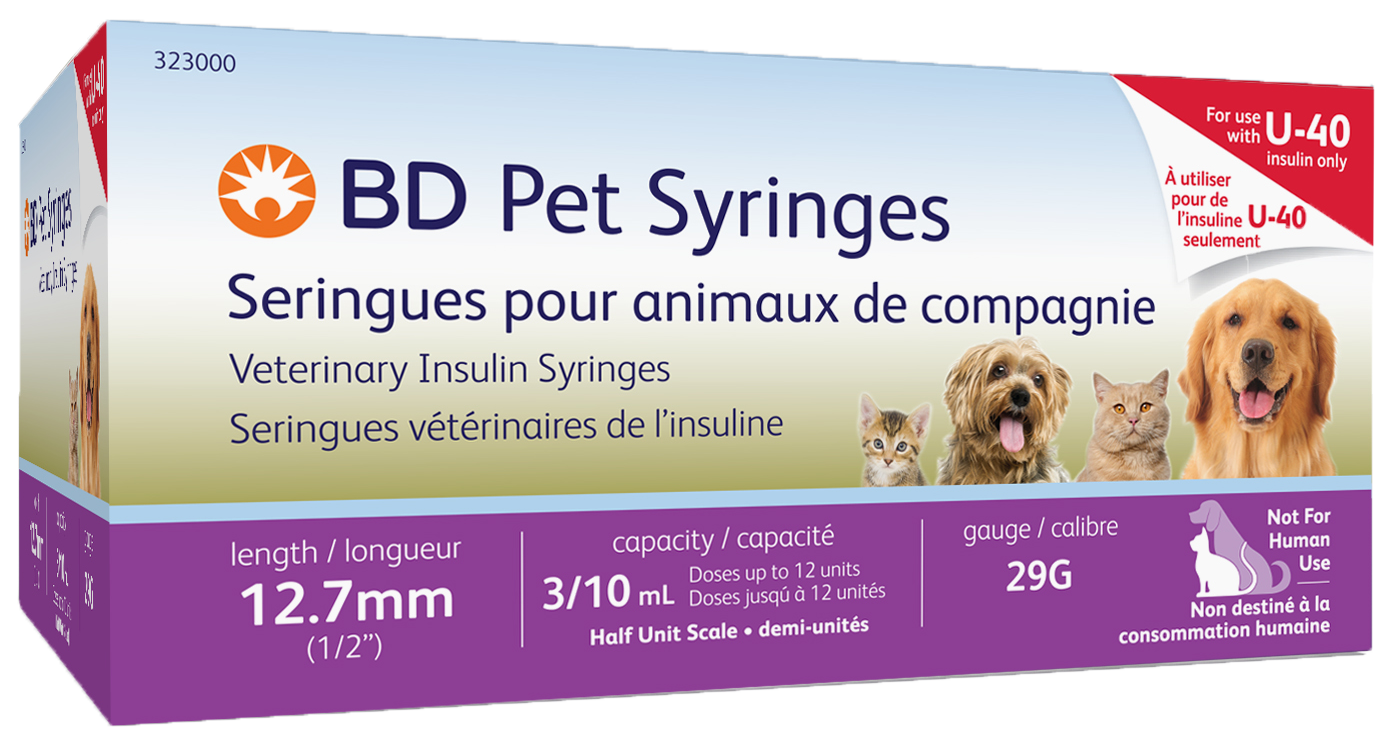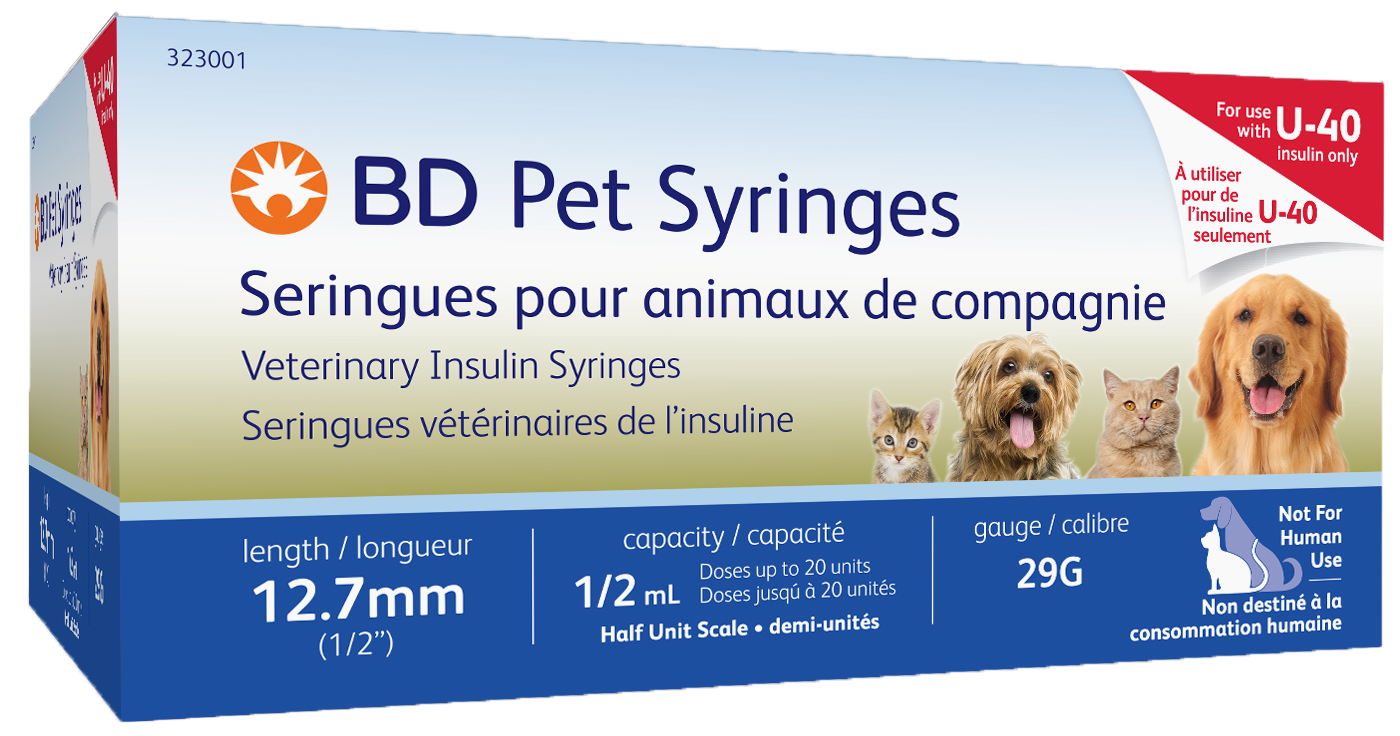 Web Content Viewer
Web Content Viewer
Keep a Leash on Diabetes with Proper Insulin Administration
Published on 4/21/20

Keep a leash on diabetes with proper insulin administration
Diabetes is a common but manageable condition in cats and dogs that requires ongoing commitment by both veterinarian and pet owner.1 Its prevalence in cats is nearly three times higher than that of dogs.2
Insulin, along with dietary modification, is the mainstay of treatment for diabetes. To administer insulin with a vial, the American Animal Hospital Association (AAHA) recommends using a 12.7mm x 29G insulin syringe with a barrel size of either 0.3 or 0.5 mL to facilitate accurate dosing, especially if the pet is getting < 5 units per dose.1
How can I help my patients and their owners with insulin administration?
Insulin administration can be a difficult task for pet owners. The following insights are recommended by the AAHA to guide pet owners on how to administer insulin to their dog or cat:3,4
Download this client handout to print and give as a resource for your clients!

To assist with safe insulin syringe disposal, BD offers
home sharps disposal containers and the BD Safe Clip – needle clipping device.
References: 1. Behrend E, Holford A, Lathan P, Rucinsky R, Schulman R. 2018 AAHA diabetes management guidelines for dogs and cats. J Am Anim Hosp Assoc. 2018; 54:1–21. 2. State of Pet Health 2016 Report. Banfield Pet Hospital. https://www.banfield.com/Banfield/media/PDF/Downloads/soph/Banfield-State-of-Pet-Health-Report-2016.pdf Accessed March 20, 2020. 3. How to Administer Insulin to Your Dog. AAHA. https://www.aaha.org/globalassets/02-guidelines/diabetes/diabetes-insulin-dog. Accessed March 20, 2020. 4. How to Administer Insulin to Your Cat. AAHA. https://www.aaha.org/globalassets/02-guidelines/diabetes/diabetes_insulin_cat_final.pdf. Accessed March 20, 2020.


